Étiquette : Petrach
Posted by: Karel Vereycken | on janvier 2, 2021
The Greek language project, Plato and the Renaissance
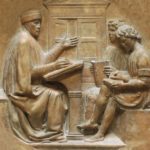
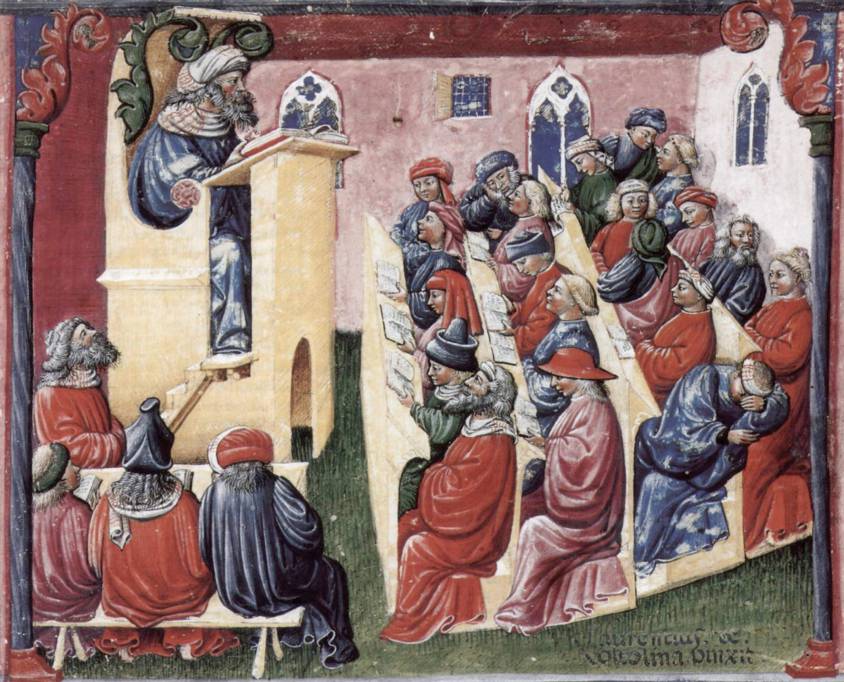
By Karel Vereycken
Some friends asked me to elaborate on the following:
It is sometimes said that the introduction of Plato in the context of the Councils of Ferrara and Florence (1439) “triggered the explosion of the Italian Renaissance”.
And of the great humanist, the German Cardinal-philosopher Cusanus, it is said that he “brought to Florence Bessarion and Plethon, who were both Greek scholars of Plato and brought the entire works of Plato which had been lost in Europe for centuries”.
At the same time, goes the narrative, “the Medicis financed a crash program to translate the works of Plato. This excitement made the Italian Renaissance what it became”.
While Plato’s ideas and the renewal of greek studies did play a major role in triggering the European Renaissance, the preceding affirmations, as we shall document here, require some refinement.
Was the Italian Renaissance “triggered” by the Council of Florence?
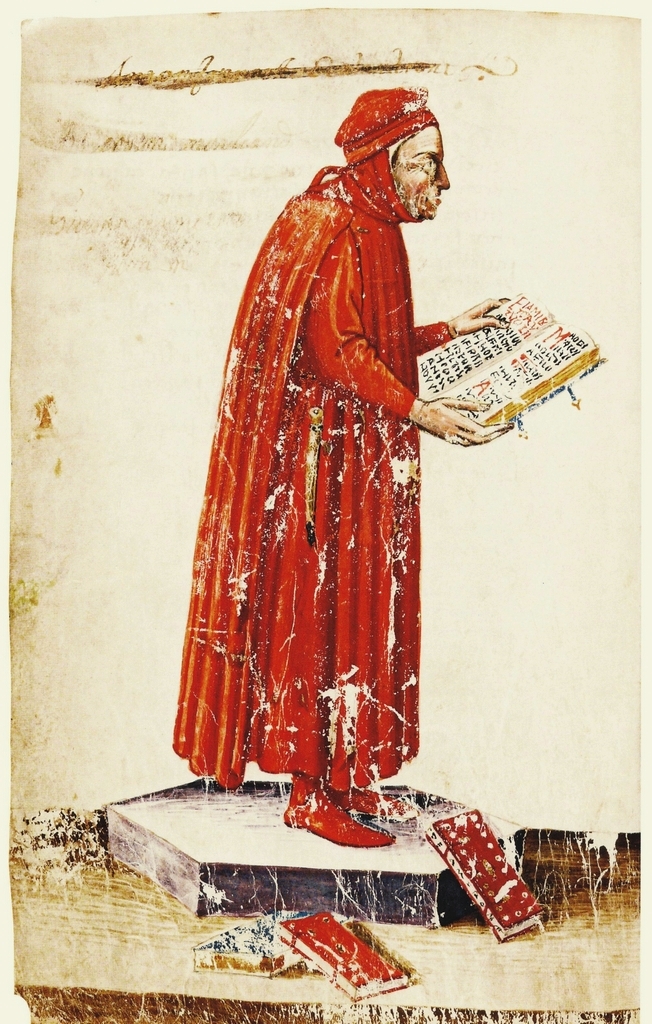
Not really. It was rather –40 years earlier–, the “Greek language revival project” project of Coluccio Salutati (1332-1406), who would become the chancellor of Florence and invite the Greek scholar Manuel Chrysoloras (1355-1415) to his city, that “triggered” a revival of Greek and Hebrew studies, which in return lead to the unification of the churches at the Council of Florence (1439).
The idea had regained interest from Petrarch and Boccaccio, which Salutati admired. Along with Dante Alighieri (1265-1321), it is undoubtedly the Italian poet Petrarch (1304-1374) who best embodies the ideals guiding the humanists of the Renaissance.
All his life, it is said, Petrarch tried to
« rediscover the very rich teaching of classical authors in all disciplines and, starting from this sum of knowledge, most often scattered and forgotten, to revive and pursue the research that these authors had begun. »
After following his parents to Avignon, Petrarch studied in Carpentras where he learned grammar, then in Montpellier, rhetoric, and finally in Bologna, where he spent seven years at the school of jurisconsults.
However, instead of studying law, which in those days paved the way to a brilliant career, Petrarch secretly read all the classics hitherto known, including Cicero and Virgil, despite the fact that his father occasionally burned his books.
Petrarch and Barlaam of Samara
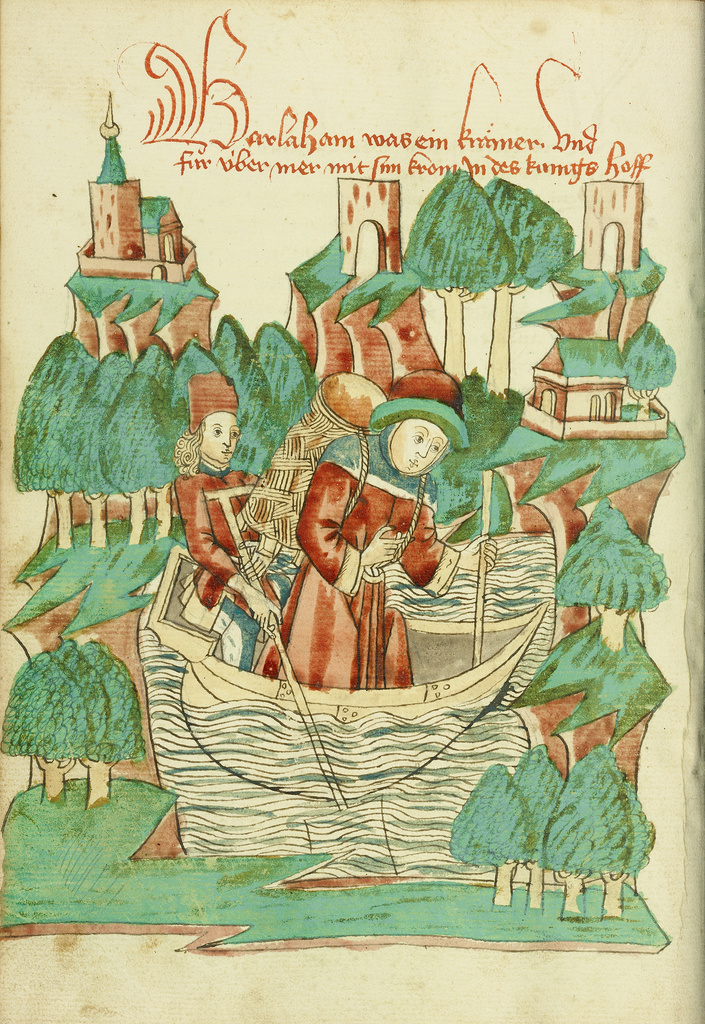
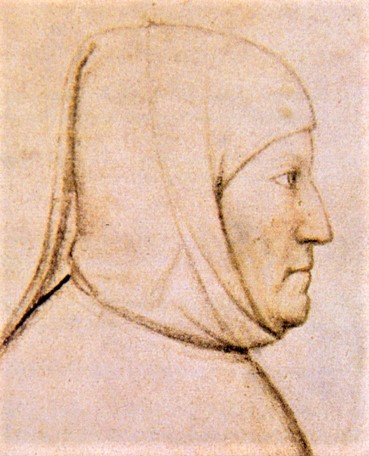
Under the pontificate of Benedict XII, Petrarch tried to learn Greek language with the help of a learned monk of the Order of St. Basil, Barlaam of Seminara (1290-1348), known as Barlaam the Calabrian, who came to Avignon in 1339 as ambassador of Andronic III Paleologus in an unsuccessful attempt to put an end to the schism between the Orthodox and Catholic Churches.
A philosopher, theologian and mathematician, Barlaam, while having limited knowledge of Greek and Latin, was one of the first to wish that the study of the Greek language and philosophy be reborn in Europe.
In his Treatise On my own ignorance and that of many others (1367), Petrarch declared himself proud of his Greek manuscripts – and of his library in general – and expressed his deep admiration for Barlaam:
« I have at home sixteen works of Plato. I don’t know if my friends have ever heard the titles […]. And this is only a small part of Plato’s work, for I have seen, with my own eyes, a large number of them, especially in possession of the Calabrian Barlaam, a modern model of Greek wisdom who began to teach me Greek while I was still ignorant of Latin, and who might have done so successfully if death had not taken him away from me and hindered my honest plans, as usual.«
In 1350, two years after Barlaam’s death, Petrarch met the son of a banker, Giovanni Boccaccio (1313-1375). The latter, like Petrarch, fell in love with the Greek culture and language. In his youth, in Naples, he too had met Barlaam and learned a few words of Greek, meticulously copying alphabets and verses, adding the Latin translation and pronunciation indications.
Boccaccio and Leontius Pilatus
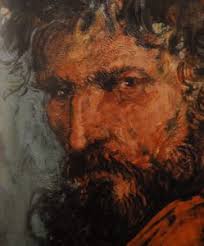
To increase his mastery of Greek, Boccaccio then called from Thessaloniki a disciple of Barlaam, Leontius Pilatus (died in 1366), an austere, ugly and very bad-tempered character. But this Calabrian lectured him on Homer’s Iliad and Odyssey and translated sixteen of Plato’s dialogues. How could one get angry with him?
Boccaccio offered him shelter and food for three years in his home and had a chair of Greek created for him in Florence, the first time ever!
Unfortunately, Pilatus did not really master this language. Although posing as a native Greek, the man had poor knowledge of ancient Greek and his translations never got beyond the level of word-for-word. As for the lessons he gave Petrarch, they were so brutal that he disgusted him forever.
This did not prevent Pilatus, at the insistence of Boccaccio, from translating Homer’s Iliad and Odyssey into Latin from a Greek manuscript sent to Petrarch by Nicolaos Sigeros, the Byzantine ambassador to Avignon.
Hence, history being what it is, it was thanks to this highly imperfect translation that Europe rediscovered one of the great founding works of its culture!
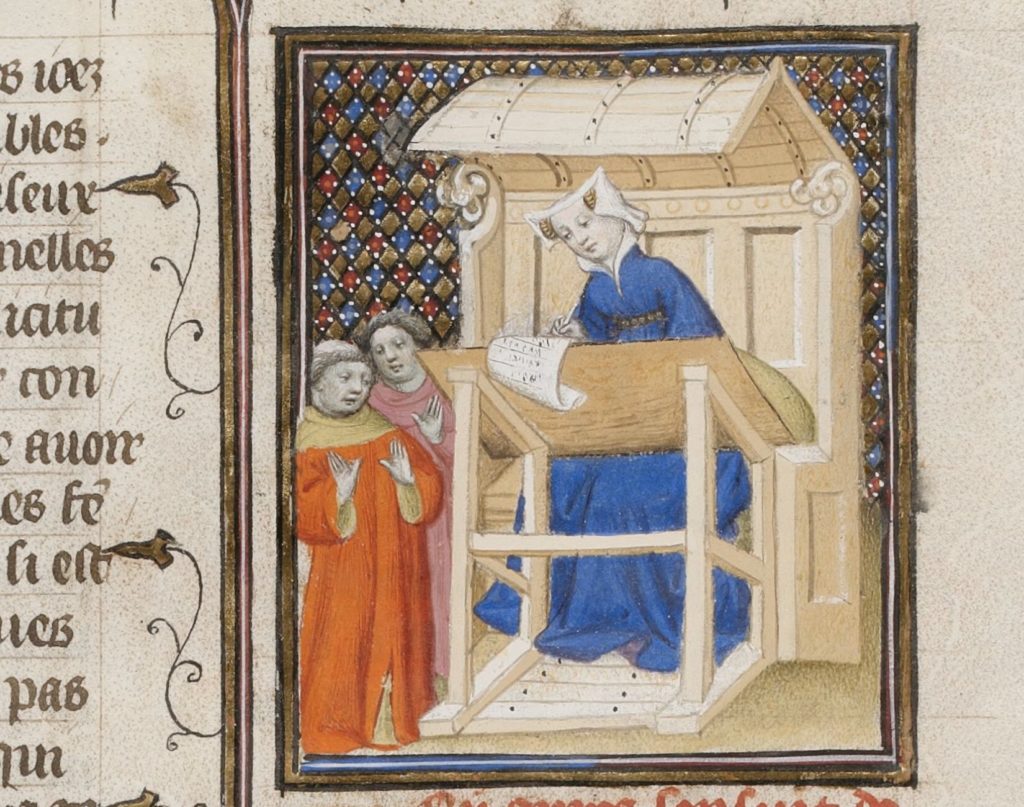
And on this fragile ground will rise a flame that will revolutionize the world.
« Was it not I, » writes Boccaccio in his Genealogy of the Gods, « who had the glory and honor of employing the first Greek verses among the Tuscans? Was it not I who, through my prayers, led Pilatus to settle in Florence and who housed him there? I brought at my own expense copies of Homer and other Greek authors when none existed in Tuscany. I was the first of the Italians to whom Homer, in particular, was explained, and then I had him explained in public.«
The hunt for manuscripts
What is important is that during these encounters Petrarch created a cultural network covering the whole of Europe, a network reaching into the East.
He then asked his relations and friends, who shared his humanist ideals, to help him find in their respective country or province, the Latin texts of the ancients that the libraries of abbeys, individuals or cities might possess. In the course of his own travels, he found several major texts that had fallen into oblivion.
It is in Liege (Belgium) that he discovered the Pro Archia and in Verona, Ad Atticum, Ad Quintum and Ad Brutum, all by Cicero. During a stay in Paris, he got his hands on the elegiac poems of Propertius, then, in 1350, on a work by Quintilian. In a constant concern to restore the most authentic text, he subjected these manuscripts to meticulous philological work and made corrections by comparing them with other manuscripts. This is how he reconstructed the first and fourth decades of the Roman History of Titus Livius from fragments and restored some of Virgil’s texts.
These manuscripts, which he kept in his own library, later came out in the form of copies and thus became accessible to the greatest number of people. While acknowledging that the pagans lacked the « true faith, » Petrarch believed that when one speaks of virtue, the old and new worlds are not at war.
The « Circolo di Santo Spirito »
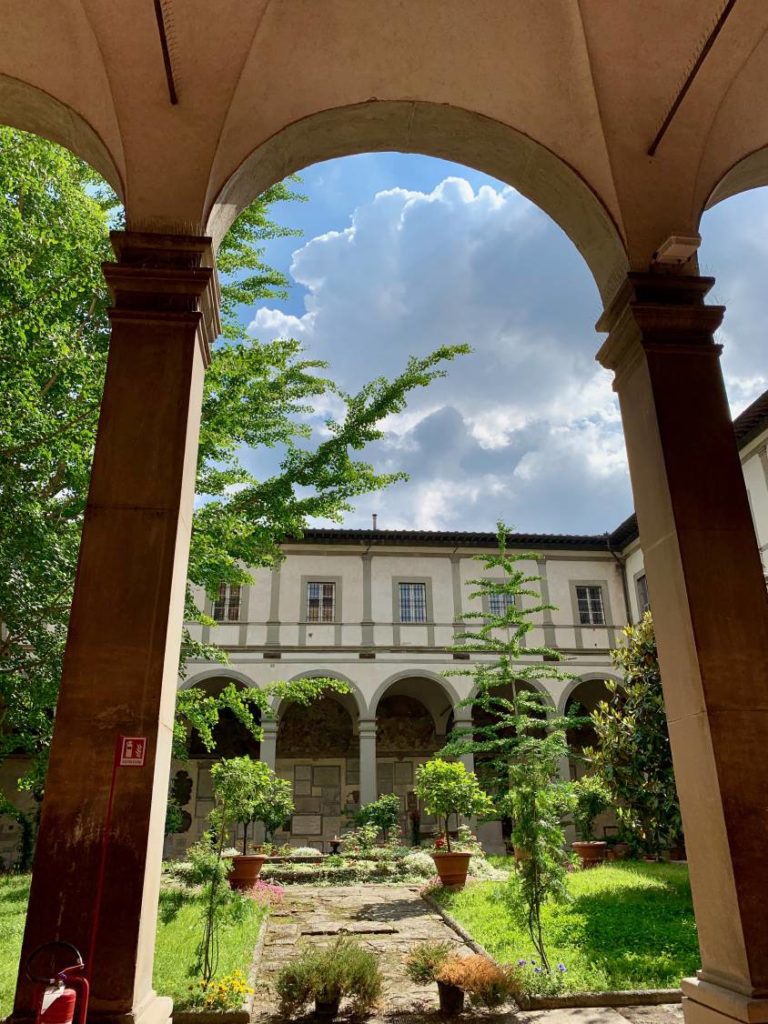
From the 1360s onwards, Boccaccio gathered a first group of humanists known as the « Circolo di Santo Spirito » (Circle of the Holy Spirit), whose name was borrowed from the 13th century Florentine Augustinian convent.
An embryonic form of a university, its Studium Generale (1284) was then at the heart of a vast intellectual center including schools, hospices and refectories for the needy.
Before his death in 1375, Boccaccio, who had recovered part of Petrarch’s library, bequeathed to the convent his entire collection of precious ancient books and manuscripts.
Then, in the 1380s and early 1390s, a second circle of humanists met daily in the cell of the Augustinian monk Luigi Marsili (1342-1394). The latter, who had studied philosophy and theology at the universities of Paris and Padua, where he already established contact with Petrarch in 1370, became friends with Boccaccio. Hence, by attending the Cercle Santo Spirito from 1375 onwards, Coluccio Salutati in turn fell in love with Greek studies.
By inviting the Greek scholar Manuel Chrysoloras (1355-1415) to Florence to teach Ancient Greek, it was Salutati who gave the decisive impulse leading to the end of the schism between East and West and thus to the unification of the Churches, consecrated at the Council of Florence in 1439.
Roger Bacon
A century before Salutati, the English philosopher and scientist Roger Bacon (1214-1294), a Franciscan monk residing in Oxford, author of one of the first Greek grammars, already called for such a « linguistic revolution ».
As wrote Dean P. Lockwood in Roger Bacon’s Vision of the Study of Greek (1919):
« Obviously, Greek was the master-key to the great storehouse of ancient knowledge, Hebrew and Arabic to lesser chambers. Furthermore, we must not forget that in Bacon’s day the superiority of the ancients was an indisputable fact. The modern world has outstripped the Greek and the Romans in countless ways; the medieval thinkers were still climbing toward the Hellenic standard.
« Three things were clear to Roger Bacon: the need of Greek, the contemporary ignorance of Greek, and the feasibility of acquiring Greek. The same may be said of Hebrew, but Bacon rightly put Greek first. Bacon’s program was simple:
« 1. Seek out the native Byzantine Greeks resident in Europe, preferably grammarians. The latter were very few, of course, but might be found in the Greek monasteries of Southern Italy.
« 2. From these and from any other available sources let Greek books be sought. If this program were to be carried out, Bacon confidently prophetized that results would not be long in forthcoming.«
Leonardo Bruni

Manuel Chrysoloras, arrived in winter 1397, an event remembered by one of his most famous pupils, the humanist scholar Leonardo Bruni (1369-1444) and later chancellor of Florence at the time of the Council of Florence, as a great new opportunity: there were many teachers of law, but no one had studied Greek in northern Italy for 700 years.
Thanks to Chrysoloras, Bruni and Pier Paolo Vergerio the Elder were able to read Aristotle and especially Plato in the original Greek version.
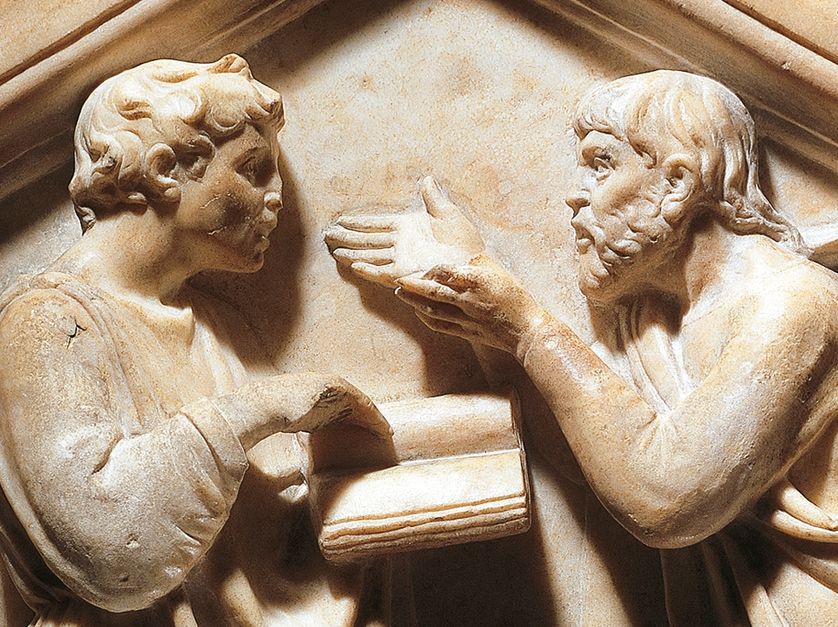
Until then, in Europe, Christians knew the names of Pythagoras, Socrates and Plato by their reading of the church fathers Origen, St. Jerome and St. Augustine.
The latter, in his City of God, did not hesitate to affirm that the « Platonists », that is Plato and those who assimilated his teaching (Plato et qui eum bene intellexerunt), were superior to all other pagan philosophers.
As we have demonstrated elsewhere, in particular in our study on Raphael and the School of Athens, it is to a large extent Plato’s optimistic and Promethean philosophical approach, for whom knowledge comes above all from the capacity for hypothesis and not from the mere testimony of the senses as Aristotle claims, that clearly provided the sap that allowed the Renaissance tree to offer humanity so many wonderful fruits.
Traversari’s humanist circle
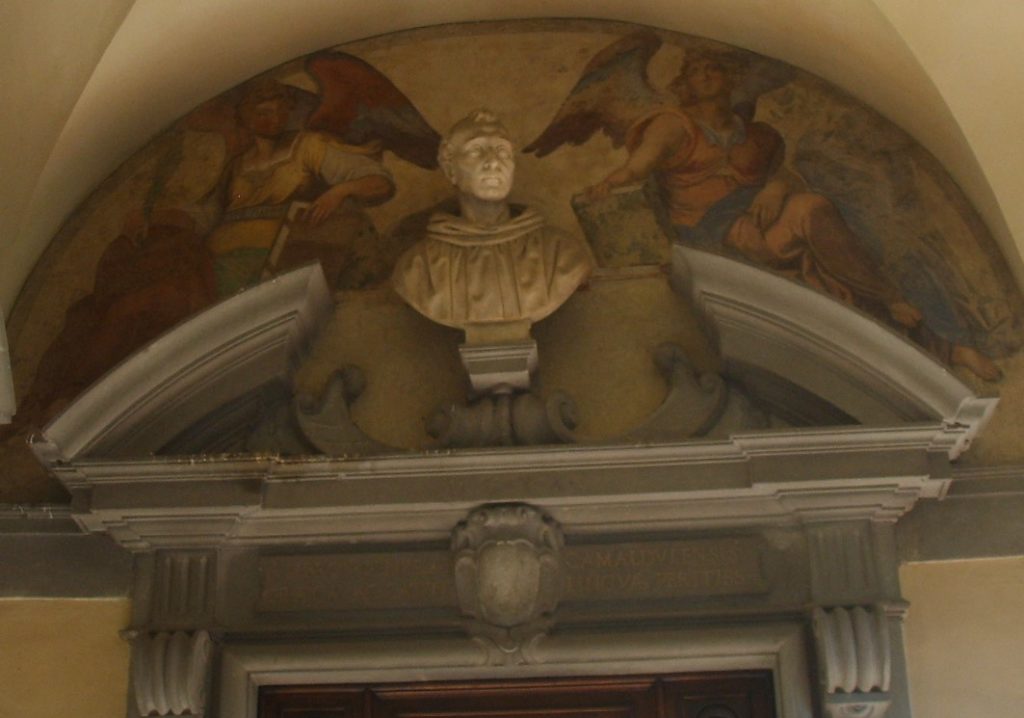
The most famous pupil of Chrysoloras was Ambrogio Traversari (1386-1439), who became general of the Camaldolese order. Today honored as a saint by his order, Traversari was one of the first to conceptualize the type of “Christian Humanism” that would be promoted by Nicolaus of Cusa (Cusanus) and later Erasmus of Rotterdam (who framed the concept of “Saint-Socrates”) and the latter’s admirer Rabelais, uniting Plato with the Holy Scriptures, and the fathers of the Church.
Traversari, a key organizer of the Council of Florence, was also the personal protector of the great Renaissance painter Piero della Francesca and of the architect of the Dome Filippo Brunelleschi.

According to Vespasiano de Bisticci, the court historian of the Court of Urbino, Traversari had weekly working sessions on Plato and Greek philosophy at the Santa Maria degli Angeli convent with the crème de la crème of European humanism in the fields of literature, theology, science, politics, architecture, infrastructure, urban planning, education and the fine arts. Among those :
- The German cardinal-philosopher Nicholas of Cusa (Cusanus);
- Paolo dal Pozzo Toscanelli, the great physician and cartographer, also friend and protector of Piero della Francesca and Leonardo da Vinci.
- The erudite manuscript collector Niccolò Niccoli, adviser to Cosimo the Elder, heir to the Medici’s industrial and financial empire. Considered at the time to be the richest man in the West, Cosimo was one of the patrons of the sculptor Donatello;
- Aeneas Sylvius Piccolomini, the future humanist pope Pius II;
- Leonardo Bruni, the apostolic secretary of Pope Innocent VII and his three successors. He succeeded Coluccio Salutati at the chancellery of Florence (1410-1411 and 1427-1444).
- The Italian statesman Carlo Marsuppini, passionate about Greek Antiquity, and successor of Bruni as Chancellor of the Republic of Florence after the latter’s death in 1444.
- The philosopher, antiquarian and writer Poggio Bracciolini. After having advised no less than nine popes (!), he was appointed Chancellor of the Republic of Florence following the death of Marsuppini in 1453;
- The politician and ambassador Gianozzi Manetti. In love with ancient Greek and Hebrew, his circle includes the éducator Francesco Filelfo, the banker Palla Strozzi and the founder of the Vatican library Lorenzo Valla ;
Chrysoloras in Florence

Chrysoloras remained only a few years in Florence, from 1397 to 1400, teaching Greek, starting with the rudiments. He moved on to teach in Bologna and later in Venice and Rome. Though he taught widely, a handful of his chosen students remained a close-knit group, among the first humanists of the Renaissance. As said before, among his pupils one could count some of the foremost figures of the revival of Greek studies in Renaissance Italy.
Aside from Bruni and Ambrogio Traversari, they included Guarino da Verona and the Florentine banker Palla Strozzi (1372-1462), later the friend and protector of the sculptor and translator Lorenzo Ghiberti. It is worth noting that Strozzi paid part of Chrysoloras’ salary and had the books necessary for the new teaching brought from Constantinople and Greece.
Chrysoloras went to Rome on the invitation of Bruni, who was then secretary to Pope Gregory XII. In 1408, he was sent to Paris on an important mission from the emperor Manuel II Palaeologus (1350-1425). In 1413, he went to Germany on an embassy to the emperor Sigismund, the object of which was to decide on the site for the church council that assembled at Constance in 1415. Chrysoloras was on his way there, having been chosen to represent the Greek Church, when he died that year.
Chrysoloras translated the works of Homer and Plato’s Republic from Greek into Latin. His Erotemata (Questions-answers), which was the first basic Greek grammar in use in Western Europe, circulated initially as a manuscript before being published in 1484.
Widely reprinted, it enjoyed considerable success not only among his pupils in Florence, but also among later leading humanists, being immediately studied by Thomas Linacre at Oxford and by Erasmus when he resided at Cambridge. It’s text became the basic manual used by pupils of the Three Language College set up by Erasmus in Leuven (Belgium) in 1515.
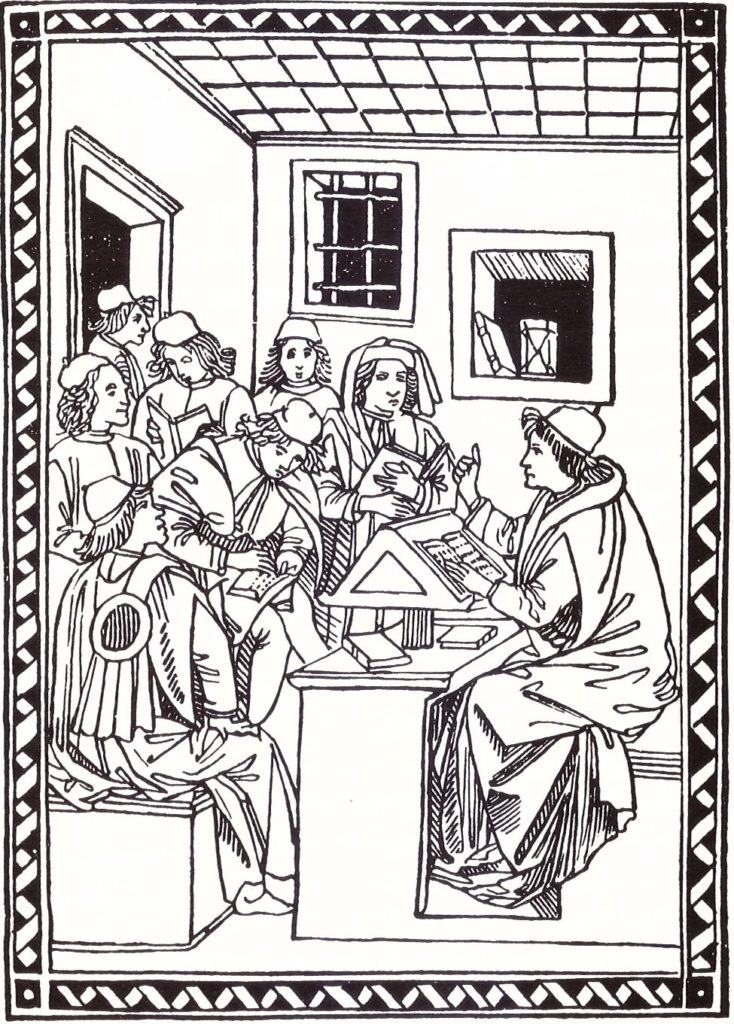
Traversari meets Chrysoloras during his two stays in Florence in the summer of 1413 and in January-February 1414, and the old Byzantine scholar is impressed by the bilingual culture of the young monk; he sends him a long philosophical letter in Greek on the theme of friendship. Ambrogio himself expresses in his letters the highest consideration for Chrysoloras, and emotion for the benevolence he showed him.
It should also be noted that the rich humanist scholar Niccolò Niccoli, a great collector of books, opened his library to Traversari and put him in constant contact with the scholarly circles of Florence (notably Leonardo Bruni, and also Cosimo de Medici, of whom he was advisor), but also of Rome and Venice.
In 1423, Pope Martin V sent two letters, one to the prior of the Convent of Santa Maria degli Angeli, Father Matteo, and the other to Traversari himself, expressing his support for the great development of patristic studies in this establishment, and especially for the work of translation of the Greek Fathers carried out by Traversari.
The Pope had in mind the negotiations he was conducting at the time with the Greek Church: at the beginning of 1423, his legate Antonio de Massa returned from Constantinople and brought back with him several Greek manuscripts which were to be entrusted to Traversari for translation: notably the Adversus Græcos by Manuel Calécas, and for the classics the Lives and Doctrines of the Illustrious Philosophers by Diogenes Laërtius, a text which circulated for a long time only in Traversari’s Latin translation.
It was following these undertakings that Traversari expressed his great interest in seeing the schism between the Latin and Greek Churches resolved. At the end of 1423, Niccolò Niccoli provides Traversari with an old volume containing the entire corpus of the ancient ecclesiastical canons, and the learned monk expresses in his correspondence with the humanist his enthusiasm for being able to immerse himself in the life of the then united ancient Christian Church, and in the process, he translates into Greek a long letter from Pope Gregory the Great to the prelates of the East.
Arrival of Plato’s mind
Were Bessarion and Plethon the first to bring the entire works of Plato to Europe?
Not really. While John Bessarion did indeed bring his own collection of the “complete works of Plato” in 1437 to Florence, they had already been brought to Italy earlier, most notably in 1423 by the Sicilian Giovanni Aurispa (1376-1459), who was the teacher of Lorenzo Valla (another collaborator with whom Cusanus exposed the fraud of the “Donation of Constantine” and a major source of inspiration of Erasmus).
In 1421 Aurispa was sent by Pope Martin V to act as the translator for the Marquis Gianfrancesco Gonzaga on a diplomatic mission to the Byzantine emperor, Manuel II Palaiologos.
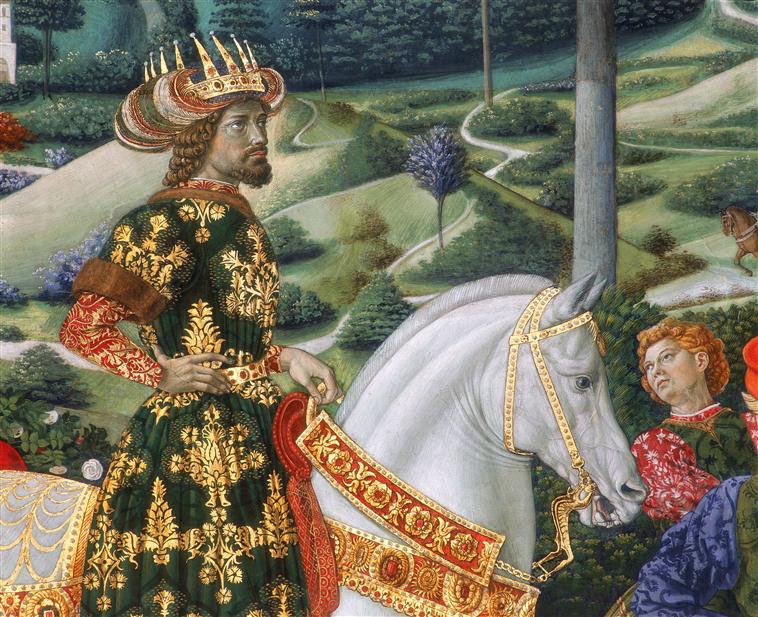
After their arrival, he gained the favor of the emperor’s son and successor, John VIII Paleologus (1392-1448), who took him on as his own secretary. Two years later, he accompanied his Byzantine employer on a mission to the courts of Europe.
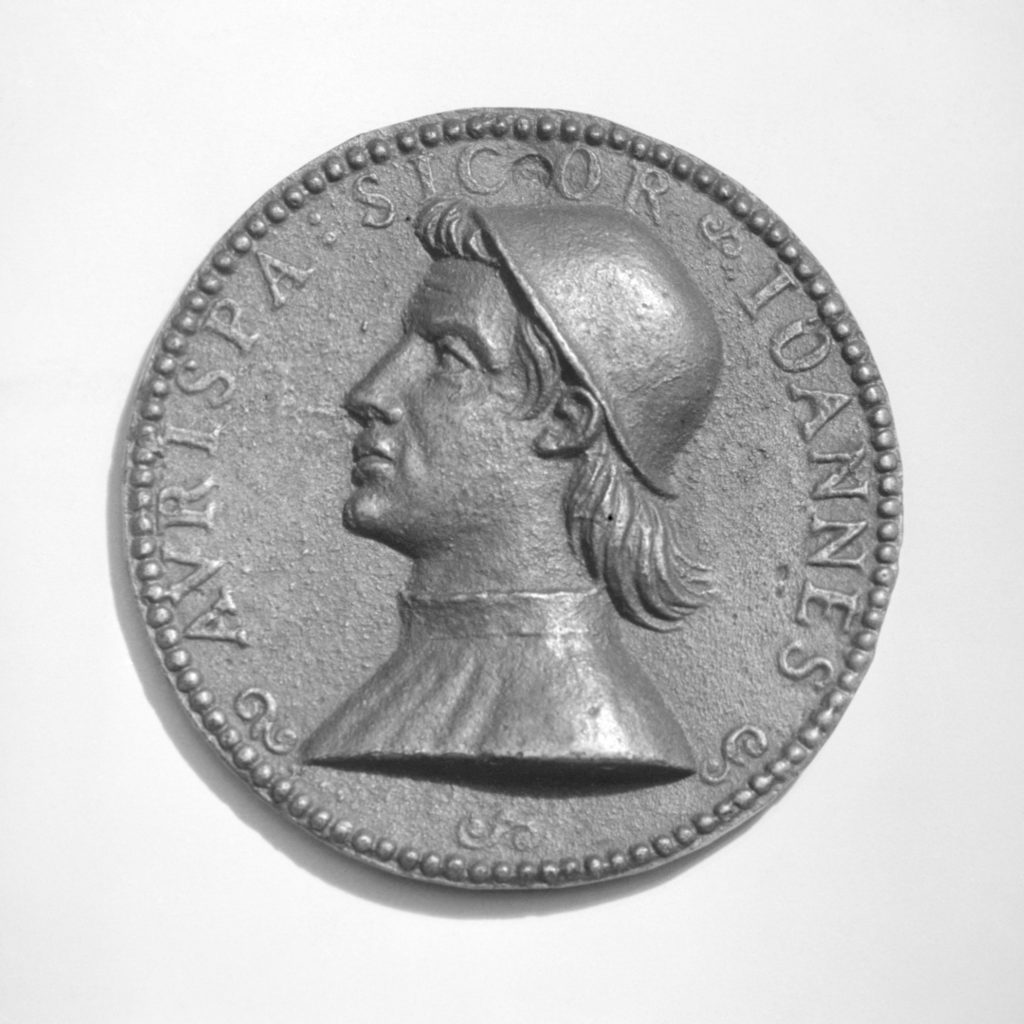
On 15 December 1423, 16 years prior to the Council of Florence of 1439, Aurispa arrived in Venice with the largest and finest collection of Greek texts to reach the west prior to those brought by Bessarion. In reply to a letter from Traversari, he says that he brought back 238 manuscripts.
These contained all of Plato’s works, most of them hitherto unknown in the West.
Plato’s works so far were only known very partially. In Sicily, Henry Aristippus of Calabria (1105-1162) had translated into Latin Plato’s Phaedo and Meno dialogues as early as 1160.
Evil neo-Platonist
Platonists (such as Petrarch, Traversari, Cusanus or Erasmus), have nothing to do and even violently opposed “Neo-platonist” (such as Plotinus, Proclus, Iamblicus, Marsilio Ficino and Pico della Mirandola) whose influence would create what could and should be called a “counter-Renaissance”.
Already Leibniz strongly warned against the “neo-Platonists” and demanded Plato be studied in his original writings rather than through his commentators, however brilliant they might be:
“non ex Plotino aut Marsilio Ficino, qui mira semper et mystica affectantes diceren tanti uiri doctrinam corrupere.”
[In English: Plato should be studied, but “Not from Plotinus nor Marsilio Ficino, who, by always striving to speak wonderfully and mystically, corrupt the doctrine of so great a man. »]
George Gemisthos « Plethon »

Now, let us enter Plethon, who thought Plato and Aristotle could each one play their own role. George Gemistos « Plethon » (1355-1452), was a follower of the radical “neo-Platonist” Michael Psellos (1018-1080). Around 1410 Gemistos created a “neo-Platonic” academy in Mistra (near the site of ancient Sparta) and added “Plethon” to his name to make it resemble to « Plato ». He was also an admirer of Pythagoras, Plato, and the “Chaldean Oracles”, which he ascribed to Zoroaster.
Gemistos came for the first time to Florence when he was fifteen years old and became an authority in Mistra. So at the time of the Council, the Emperor, John VIII Paleologus, knew they were going to face some of the finest minds in the Roman Church on their own soil; he therefore wanted the best minds available in support of the Byzantine cause to accompany him. Consequently, the Emperor appointed George Gemistos as part of the delegation. Despite the fact that he was a secular philosopher — a rare creature at this time in the West — Gemistos was renowned both for his wisdom and his moral rectitude. Among the clerical lights in the delegation were John Bessarion, Metropolitan of Nicaea, and Mark Eugenikos, Metropolitan of Ephesus. Both had been students of Gemistos in their youth. Another non-clerical member of the delegation was George Scholarios: both a future adversary of Gemistos and a future Patriarch of Constantinople as Gennadios II. Initially, Gemistos was opposed to the unity of the western and eastern churches.
Not assisting at every theological debate during the Council of Florence of 1439, he went in town to give lectures to intellectuals and nobles on the essence of Plato and Neo-platonic philosophy. Plethon also brought with him the text of the “Chaldean Oracles” attributed to Zoroaster.
While most of Plethon’s writing were burned, since he was suspected of heresy, a large number of Plethon’s autograph manuscripts ended up in the hands of his former student Cardinal Bessarion. On Bessarion’s death, he willed his personal library to the library of San Marco in Venice (where over 4000 Greeks resided). Among these books and manuscripts was Plethon’s Summary of the Doctrines of Zoroaster and Plato. This Summary was a summary of the Book of Laws, which Plethon wrote inspired by Plato’s laws. The Summary is a mixture of polytheistic beliefs with neo-Platonist elements.
While John Bessarion (1403-1472), a real humanist, took part in the Council in Ferrara (1437) and Florence (1439), and as the representative of the Greek, signed the decree of the Florentine Union, he held nevertheless to the principle: “I honor and respect Aristotle, I love Plato” (colo et veneror Aristotelem, amo Platonem). For him Platonic thought would have the right of citizenship equal to Aristotelian thought in the Latin world only when it appeared in an irenic interpretation to Aristotelianism and as not in contradiction with Christianity, since only such an interpretation of Platonism could succeed at that time.
Cosimo di Medici and Ficino

Did the Medicis finance a crash program to translate the works of Plato?
In 1397, Giovannni « di Bicci » de’ Medici (1360-1429) set up the Medici Bank. Giovanni owned two wool factories in Florence and was a member of two guilds: the Arte della Lana and the Arte del Cambio.
In 1402, he was one of the judges on the jury that selected Lorenzo Ghiberti’s design for the bronzes for the doors of the Baptistery of Florence.
In 1418, Giovanni di Bicci, wishing to endow his family with their own church, entrusted Filippo Brunelleschi, future architect of the famous dome of the Cathedral of Santa Maria del Fioro, the Duomo, with the task of radically transforming the basilica church of San Lorenzo and ordered Donatello to execute the sculptures.
Politically, the Medici family did not come to power until 1434, three years before the Council of Florence and at a time when the Renaissance was already in full swing.
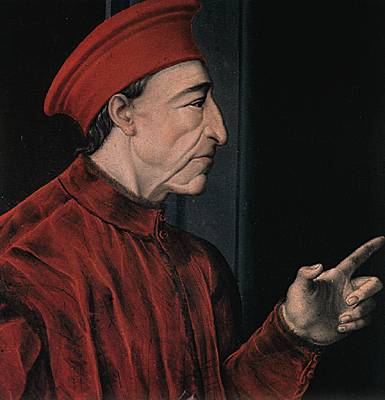
Admittedly, Giovanni’s son and inheritor of his financial empire, Cosimo di Medici (1389-1464), known as the richest man of his epoch, became so inspired by Plethon that he acquired a complete library of Greek manuscripts. He bought a copy of the Platonic Corpus (24 dialogues) from Plethon, and a copy of the Corpus Hermeticum of Hermes Trismegistus, acquired in Macedonia by an Italian monk, Lionardo of Pistoia. Cosimo also decided to initiate a project to translate from the Greek into Latin, the totality of Plato’s works.
However, as said before, Leonardo Bruni (1369-1444), who after having been papal secretary became chancellor of the Florentine republic from 1427 till 1444, had already translated close to all of Plato’s works from Greek into Latin.
It should be underlined that the translator chosen by Cosimo was Marsilio Ficino (1433-99), the son of his personal physician and only five years old at the time of the Council of Florence in 1439. Cosimo had some severe doubts concerning Ficino’s capacities as translator. When the latter offers in 1456 his first translation, The Platonic Institutions, Cosimo asks him kindly not to publish this work and to learn first the Greek language… which Ficino learns then from Byzantine scholar John Argyropoulos (1415-1487), an Aristotelian pupil of Bessarion who rejected the Council of Florence’s epistemological revolution.
But seeing his age advancing and despite his unfortunate descent into corruption, Cosimo finally gave him the post. He allocates him an annual stipend, the required manuscripts and a villa at Careggi, close to Florence, where Ficino would set up his “Platonic Academy” with a handful of followers, among which Angelo Poliziano (1454-94), Giovanni Pico della Mirandola (1463-1494) and Cristoforo Landino (1424-1498).

Ficino’s “Academy”, taking up the ancient neo-platonic tradition of Plotinus and Porphyry (as Ficino states himself) would organize each year a ceremonial banquet “neglected since one thousand two hundred years” on November 7, thought to be simultaneously the birthday of Plato and the day of his death.
After the dinner, the attendants would read Plato’s Symposium and then each of them would comment on one of the speeches. The comments are demonstrations, without any real dialogue and void of the essence of real platonic thinking: irony. On top of that it is remarkable that most gatherings of Ficino’s academy were attended by the ambassador of Venice in Florence, notably the powerful oligarch Bernardo Bembo (1433-1519), father of “poet” cardinal Pietro Bembo, later special advisor to the evil Genovese “Warrior Pope” Julius II.
It was this alliance of the increasingly more degenerated Medici family, the Venetian Empire’s maritime slave trade and the anti-Platonic neo-Platonists that gained dominant influence over the Curia of the Roman Catholic Church. The Medici’s clearly disliked Da Vinci (who never got an order from the Vatican and subsequently left Italy), and through their propaganda man Vasari made the world belief that the Renaissance was exclusively their baby.
But before translating Plato, and at the specific demand of Cosimo, Ficino translated first (in 1462) the Orphic Hymns, the Sayings of Zoroaster, and the Corpus Hermeticum of Hermes Trismegistus the Egyptian (between 100 and 300 after BC).
It will be only in 1469 that Ficino will finish his translations of Plato after a nervous breakdown in 1468, described by his contemporaries as a crisis of “profound melancholy”.
In 1470, and with a title plagiarized from Proclus, Ficino wrote his “Platonic Theology or on the immortality of the Soul.” While completely taken in by esoteric neo-Platonism, he became a priest in 1473 and wrote “The Christian Religion” without changing his neo-platonic pagan outlook, producing an entire new series of translations of the neo-Platonists of Alexandria: he translated the fifty-four books of Plotinus “Enneads”, Porphyry and Proclus.
Ficino, in his “Five Questions Concerning the Mind” explicitly attacks the Promethean conception of man:
« Nothing indeed can be imagined more unreasonable than that man, who through reason is the most perfect of all animals, nay, of all things underheaven, most perfect, I say, with regard to that formal perfection that is bestowed upon us from the beginning, that man, also through reason, should be the least perfect of all with regard to that final perfection for the sake of which the first perfection is given. This seems to be that of the most unfortunate Prometheus. Instructed by the divine wisdom of Pallas, he gained possession of the heavenly fire, that is, reason. Because of this very possession, on the highest peak of the mountain, that is, at the very height of contemplation, he is rightly judged most miserable of all, for he is made wretched by the continual gnawing of the most ravenous of vultures, that is, by the torment of inquiry…” (…) “What do the philosophers say to these things? Certainly, the Magi, followers of Zoroaster and Hostanes, assert something similar. They say that, because of a certain old disease of the human mind, everything that is very unhealthy and difficult befalls us…«
The Florentine Neo-Platonic Academy, backed by the libido-driven Lorenzo de Medici (1449-1492) “The Magnificent”, will serve as a “Delphic” operation: defend Plato to better destroy him; praise him in such terms that he becomes discredited. And especially destroying Plato’s influence by opposing religion to science, at a point where Cusanus and his followers are succeeding to do exactly the opposite. Isn’t it bizarre that Cusa’s name doesn’t appear a single time in the works of Ficino or Pico della Mirandola, so overfed with all-encompassing knowledge?
Lorenzo did protect artists such as Sandro Botticelli, whose Birth of Venus exemplifies Lorenzo’s neo-platonic symbolism.
Infected with this evil neo-Platonism, Thomaso Inghirami (1470-1516), the chief librarian of pope Julius II, will accomplish nothing but this when dictating to the painter Raphaël the content of the Stanza in the Vatican some decades later.
Neo-platonic “melancholy”, which Albrecht Dürer went after in his famous engraving, will become the matrix for the romantics, the destructive virus affecting the symbolists and the so-called modern school. As for the revolution that Greek studies will bring about in the sciences, I refer you to our article on this website: 1512-2012: From Cosmography to Cosmonauts, Gerard Mercator and Gemma Frisius.
To conclude, here is a short list of translators, and I certainly forgot some of them, and their mastery of foreign languages. Even if some of them can’t be called « humanists », let’s thank them for everything they allowed us to discover. I’m profoundly convinced that without them, man would certainly not have set foot on the Moon!
- Marcus Tullius Cicero 106-43 BC: Italian, Latin and Greek;
- Philo of Alexandria 20 BC – 40 AD: hebrew, Greek;
- Origen of Alexandria 184 – 253: Greek and Latin;
- Jerome of Stridon 342-420: Italian, Latin and Greek;
- Boethius 477-524: Italian, Latin and Greek;
- Bede the Venerable 672-735: English, Latin, Greek and Hebrew;
- Charlemagne 742-814, spoke Latin and understood Greek, Hebrew and Slavonic;
- John Scotus Eriugena 800-876: Irish, Greek, Arab and Hebrew;
- Ḥunayn ibn Isḥaq 809-873: Arabic, Syriac, Persian and Greek;
- Thābit ibn Qurra 826-901: Syriac, Arabic and Greek;
- Al-Fârâbi 872-950: Farsi, Sogdian and Greek;
- Al–Biruni, 973-1048: Chorasmian, Farsi, Frabic, Syriac, Sanskrit, Hindi, Hebrew and Greek ;
- Adelard of Bath 1080-1152: English, Latin and Arabic;
- Héloïse 1092-1141: French, Latin, Greek and Hebrew;
- Hugh of Saint Victor 1096-1141: French, Latin, Greek;
- Constantine the African XIth Cent: Arabic, Latin, Greek and Italian;
- John Sarrazin XIIth Cent: Latin and Greek;
- Henricus Aristippus 1105-1162: Italian, Latin and Greek;
- Gerard of Cremona 1114-1187: Italian, Latin and Arabic;
- Robert Grosseteste 1168-1253: English, Latin and Greek;
- Michael Scot 1175-1232: Scottish, Latin, Greek, Arab and Hebrew;
- Moses of Bergamo (XIIth Century): Italian, Latin and Greek;
- Burgundio of Pisa (XIIth Century): Italian, Latin and Greek;
- James of Venice (second half IIth Century, dies after 1147): Italian, Latin and Greek ;
- Roger Bacon 1214-1294: English, Latin, Greek, Hebrew, Arabic and Chaldean ;
- William of Moerbeke 1215-1286: Dutch, Latin and Greek;
- Raymond Lull 1232-1315: Catalan, Latin and Arabic;
- Arnaldus de Villa Nova 1240-1311: Catalan, Latin, Greek and Arabic;
- Dante Alighieri 1265-1321: Italian and Latin;
- Francesco Petrarch 1304-1375: Italian and Latin;
- Giovanni Boccaccio 1313-1375: Italian and Latin;
- Coluccio Salutati 1331-1406: Italian and Latin;
- Geert Groote 1340-1384: Dutch, Latin, Greek and Hebrew;
- Florens Radewijns 1350-1400: Dutch and Latin;
- Manuel Chrysoloras 1355-1415: Greek, Latin and Italian;
- Georgius Gemistus « Pletho » 1360-1452: Greek;
- Jacopo d’Angelo 1360-1410, Italian, Latin and Greek;
- Pier Paolo Vergerio (the Elder) 1370-1445: Italian, Latin and Greek;
- Leonardo Bruni 1370-1441: Italian, Latin, Greek, Hebrew and Arabic;
- Guarino Guarini 1370-1460: Italian, Latin and Greek;
- Palla di Onofrio Strozzi 1372-1462: Italian, Latin and Greek;
- Giovanni Aurispa 1376-1459: Italian, Latin and Greek;
- Vittorino da Feltre 1378-1446: Italian, Latin and Greek;
- Poggio Bracciolini 1380-1459: Italian, Latin and Greek;
- Ambrogio Traversari 1386-1439: Italian, Latin and Greek;
- Gianozzo Manetti 1396-1459: Italian, Latin, Greek and Hebrew;
- Georges of Trebizond 1396-1472: Greek, Latin and Italian;
- Tommaso Perentucelli (Pope Nicolas V) 1397-1494: Italian and Latin;
- Francesco Filelfo 1398-1481: Italian, Latin and Greek;
- Carlo Marsuppini 1399-1453: Italian, Latin and Greek;
- Theodorus Gaza 1400-1478: Greek and Latin;
- John Bessarion 1403-1472: Greek, Latin and Italian;
- Lorenzo Valla 1407-1457: Italian, Latin and Greek;
- Nicolas of Cusa 1401-1464: German and Latin;
- John Wessel Gansfoort 1419-1489: Dutch, Latin, Greek and Hebrew;
- Georg von Peuerbach 1423-1461: German, Latin and Greek;
- Demetrios Chalkokondyles 1423-1511: Greek and Latin;
- Marcilio Ficino 1433-1499: Italian, Latin and Greek;
- Constantine Lascaris 1434-1501: Greek, Latin and Italian;
- Regiomontanus 1436-1476: German, Latin and Greek;
- Alexander Hegius 1440-1498: Dutch, Latin and Greek;
- Rudolf Agricola 1444-1485: Dutch, Latin, Greek and Hebrew;
- Janus Lascaris 1445-1535: Greek and Latin;
- William Grocyn 1446-1519,: English, Latin and Greek;
- Poliziano 1454-1494: Italian, Latin and Greek;
- Johannes Reuchlin 1455-1522: German, Latin, Greek and Hebrew;
- Thomas Linacre 1460-1524: English, Latin and Greek;
- Erasmus of Rotterdam 1467-1536: Dutch, Latin and Greek;
- William Latimer 1467-1545 : English, Latin and Greek;
- Guillaume Budé 1467-1540: French, Latin and Greek;
- Marcus Musurus 1470-1517: Italian, Latin and Greek;
- Willibald Pirckheimer 1470-1530: German, Latin and Greek;
- Pietro Bembo 1470-1547: Italian, Latin and Greek;
- Thomas More 1478-1535: English, Latin and Greek;
- Girolamo Aleandro, 1480-1542: Italian, Latin and Greek;
- Germain de Brie 1490-1538: French, Latin and Greek;
- Juan Luis Vivès 1492-1540: Spanish, Latin, Greek and Hebrew;
Posted in Comprendre, Etudes Renaissance | Commentaires fermés sur The Greek language project, Plato and the Renaissance
Tags: Aristippus, Aristotle, artkarel, Augustine, Aurispa, Barlaam, Bessarion, Boccaccio, Bologna, Bracciolini, Brunelleschi, Bruni, Chrysoloras, Cicero, Classical Greek, Cosimo, Cusa, Da Vinci, Dante, Donatello, Dürer, Erasmus, Ficino, Filelfo, Florence, greek, hebrew, Ingirami, Julius II, Karel, Karel Vereycken, language, latin, Leontius Pilatus, Linacre, Manetti, Marsuppini, Medicis, Mirandola, neo-platonists, Origen, Padua, Petrach, Piccolomini, Piero della Francesca, Plato, Plethon, Plotinus, Porphyry, Proclus, Raphael, Rome, Salutati, Santo Spirito, School of Athens, Socrates, Strozzi, toscanelli, Traversari, Valla, Vasari, Vereycken, Virgil